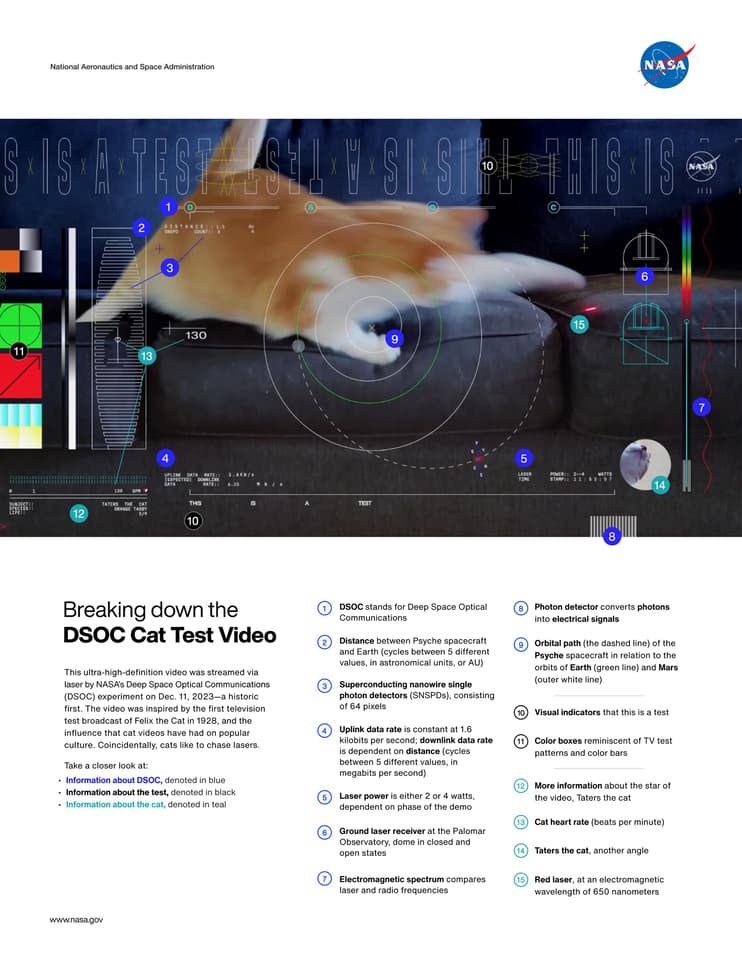NASA has taken cat videos to a whole new level, with its Psyche Deep Space Optical Communications experiment beaming a 15-second high-definition clip of a playful tabby across 19 million miles (31 million km) of space to Earth.
Watching a cat chasing a laser pointer may be cute, but why is NASA using a US$1.2-billion space mission to achieve what they could do with a smartphone? The answer is that it’s a clear demonstration of what the next generation of space communications technology can do.
NASA has achieved some remarkable things in the past six decades, but its communications system is still trapped in the 1960s, with radio systems that have a ridiculously low bandwidth. To bring its missions into the 21st century, the space agency is working aggressively to develop laser communication systems with 10 to 100 times faster data transmission rates.

NASA/JPL-Caltech
Installed aboard the Psyche mission to the main asteroid belt between the orbits of Mars and Jupiter, the Deep Space Optical Communications experiment is intended to test laser communication across hundreds of millions of miles. To give an example of the improvement, NASA says that the current test has downloaded 1.3 terabits of data, while the Magellan mission to Venus downloaded 1.2 terabits during its entire mission from 1990 to 1994.
Until now, Mission Control at the Jet Propulsion Laboratory (JPL) in Pasadena, California has been sending packets of randomly generated data since November 14, 2023, with speeds from 62.5 Mbps to 100 Mbps, but a prerecorded 15-second ultra-high definition streaming video sent on December 11 provided a more dramatic demonstration of the system’s maximum bitrate.
Featuring a cat named Taters, the video took 101 seconds to reach Earth at 267 Mbps as the near-infrared laser beamed to the Hale Telescope at Caltech’s Palomar Observatory in San Diego County, California and forwarded to Mission Control in real time. Along with Taters chasing that annoying light spot, the video also included a graphic overlay of information including laser power, data rate, test card units, and cat heart rate.

NASA/JPL-Caltech
“Despite transmitting from millions of miles away, it was able to send the video faster than most broadband internet connections,” said Ryan Rogalin, the project’s receiver electronics lead at JPL. “In fact, after receiving the video at Palomar, it was sent to JPL over the internet, and that connection was slower than the signal coming from deep space. JPL’s DesignLab did an amazing job helping us showcase this technology – everyone loves Taters.”
Except for Gollum, of course, who thinks they’re nasty and ruinses nice fishes.
The longest distance laser cat video in history can be seen below.
cat Laser
Source: NASA
Source of Article